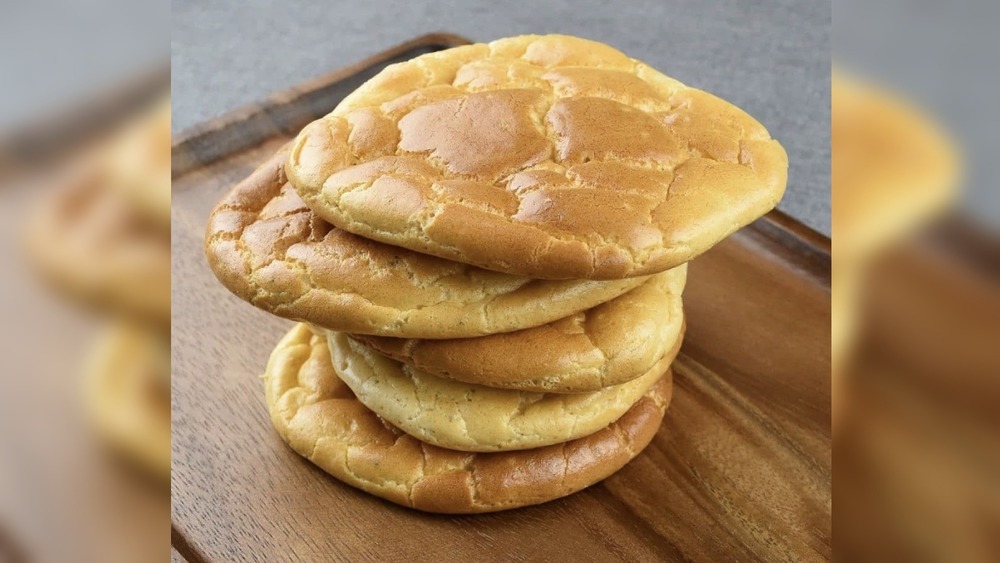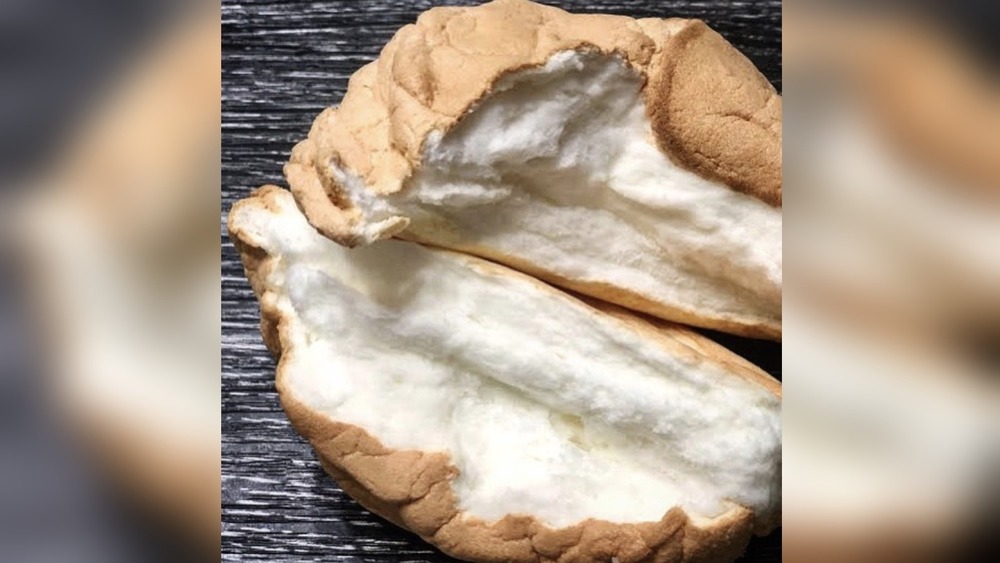Is Cloud Bread Any Healthier Than Regular Bread?
If you've spent any time on social media over the last few months, chances are you've come across cloud bread more than a few times. What started as one of the many TikTok trends of 2020 (like whipped coffee, pancake cereal, and three-ingredient creme brûlée, to name a few) it has quickly become a popular alternative to regular bread. Light and fluffy, it's praised not only for its airy texture, but also for the fact that you can make it in any rainbow of pretty colors. Basically, it's as pleasing to the eye as it is to the tastebuds.
But while many people are swapping out their sliced bread for cloud bread, bragging about all of its health benefits and diet-friendly features, just how much better is it really? Is it even healthier at all? Here's what you need to know about the nutritional makeup of cloud bread and whether it's worth trading in your regular old bread for the TikTok fad.
It depends on your definition of healthy
Cloud bread may be healthier for some people, but not for others. That's because while it has a few upsides, it also has a few downsides, depending on your diet. One of cloud bread's biggest draws is the fact that it's about half the calories of regular bread, with 40 calories per slice compared to 80 in your average sandwich bread, Health.com reports. If you're trying to lose weight or count calories, this makes it a much better option. Because it's grain-free, it also has a lot fewer carbs, so it's ideal for anyone eating low-carb or keto, for instance.
However, since cloud bread is made with egg and cream cheese (instead of flour), it's surprisingly high in fat and can have up to six grams per serving. Plus, as a nutrition editor at Health.com points out, cloud bread lacks some of the nutrients you'd find in regular bread, namely fiber and other vitamins and minerals.

